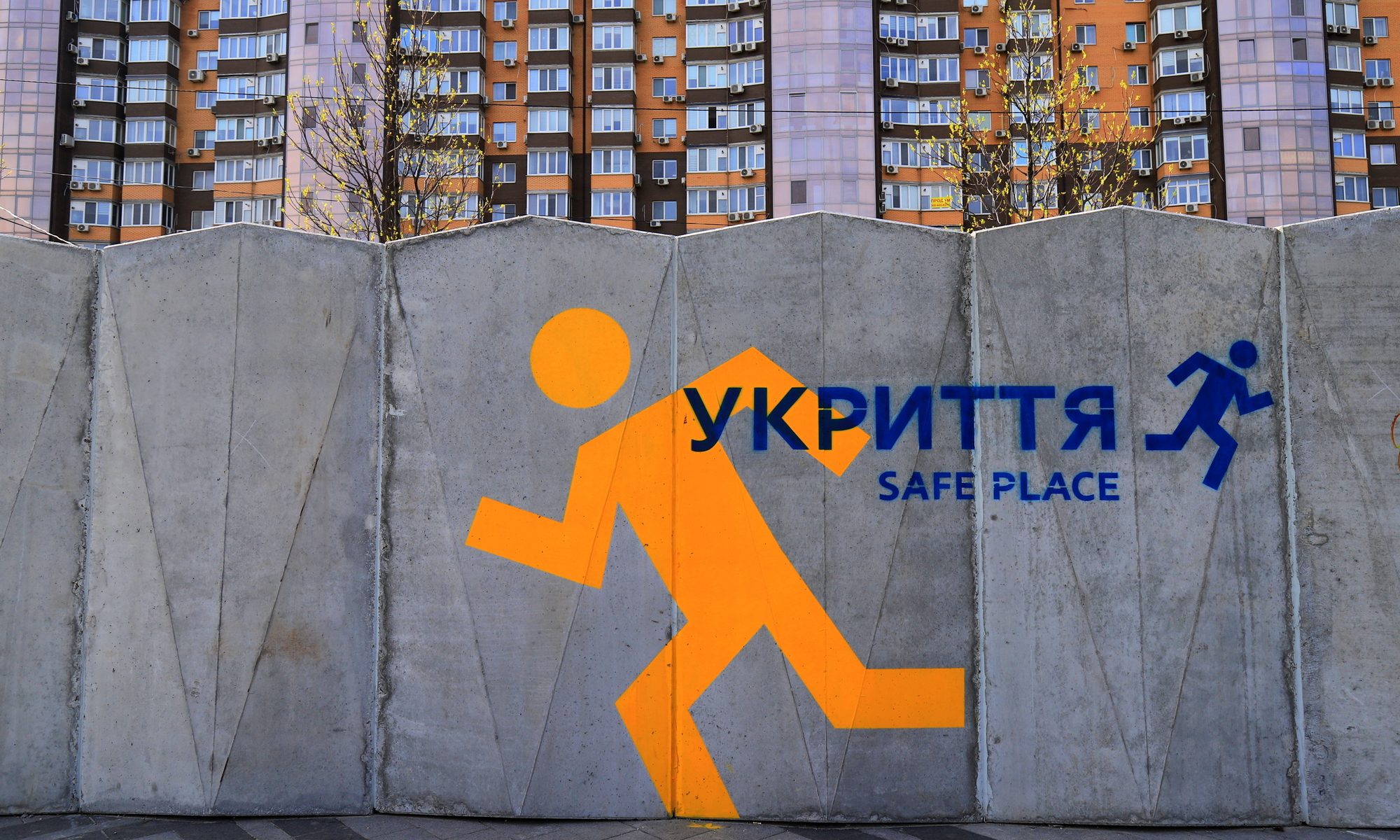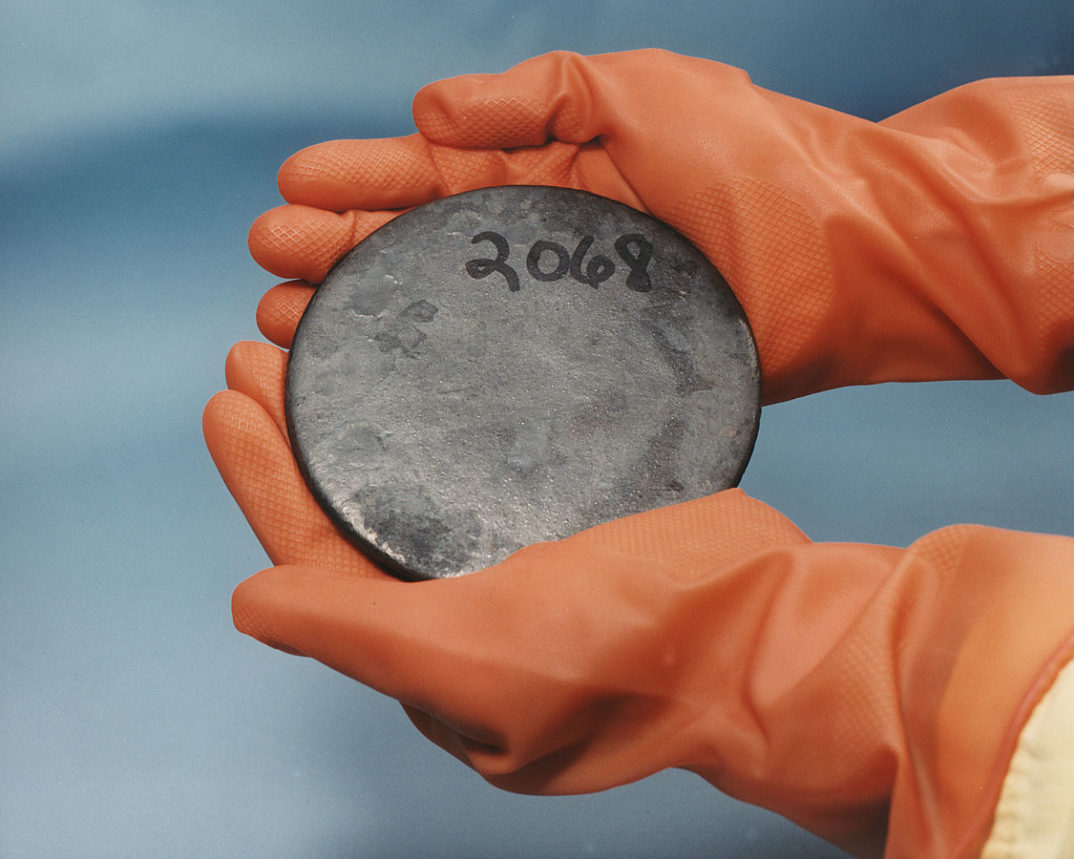This article has a set of discussion questions tailored for classroom use. Click here to download them. To see a full list of articles with discussion questions and other resources, visit our “Educational Resources” page.
When the Cold War ended thirty years ago, many hoped that the chances of nuclear war would decline, and even that nuclear weapons might be on the road to ultimate extinction. For a time, it seemed those hopes might be fulfilled. The Bulletin of the Atomic Scientists’ famous Doomsday Clock stood at six minutes to midnight – that is, global catastrophe – in 1988. The Clock was rolled back to fourteen minutes to midnight in 1995 as Russia and the United States agreed to unprecedented reductions in their strategic nuclear arsenals.
Sadly, though, these optimistic predictions have faded in recent years. Russian nuclear saber-rattling over Ukraine, the impending expiration of the one remaining nuclear weapons treaty between Russia and the United States, signs of nuclear proliferation in the Middle East, and the unprecedented challenge of managing a three-sided geopolitical competition between nuclear-armed Russia, China, and the United States have brought concerns about nuclear war back to the forefront of policymakers’ agendas. Some prominent Americans commentators are now calling for a big build-up of our nuclear arsenal. Today, the Clock stands at ninety seconds to midnight, closer to catastrophe than it has ever been – largely, the Bulletin claims, because of the mounting dangers of the war in Ukraine. Christopher Nolan’s film Oppenheimer has even reignited debate about the United States’ use of nuclear weapons against Japan during World War II – so far, the only instance of their use in anger. Thus, now seems like a propitious moment to go back to first principles: that is, to reconsider what ultimately should be done about nuclear weapons.
At the risk of oversimplifying, the basic question is whether or not to adopt disarmament as the ultimate goal. “Disarmament” means both dismantling all nuclear warheads and delivery systems, as well as eliminating stockpiles of weapons-grade fissile materials that could be used to quickly assemble a weapon. The arguments against disarmament come in two flavors: first, that nuclear weapons are effective deterrents to nuclear, chemical, biological, and conventional forms of aggression; and second, that nuclear disarmament is an unrealistic goal.
The historical case for the value of nuclear weapons as deterrents to conventional military aggression is weak. In 1950, the United States enjoyed a near-monopoly on nuclear weapons, the Soviet Union having only tested their first atomic bomb a year earlier. This did not deter North Korea from invading South Korea with the Soviet Union’s support, and it did not deter China from entering the war when U.S., South Korean, and allied forces advanced almost to the border between North Korea and China in the fall of that year. Nor did the United States’ nuclear arsenal deter North Vietnam from invading and ultimately conquering South Vietnam, a country to which the U.S. had made clear security guarantees, in the early 1970s.
The reason that the U.S.’s nuclear “umbrella” was unable to dissuade Soviet-supported regimes from engaging in aggressive conventional military action against U.S. allies during the Cold War is not difficult to understand. Ultimately, the United States’ interest in avoiding a nuclear exchange with the Soviet Union, which it might have precipitated by using nuclear weapons against one of the Soviet Union’s allies, trumped its interest in protecting its own allies from conventional aggression. Knowing this, North Korea, North Vietnam and other Soviet-backed states were confident that the United States would not actually use its nuclear arsenal against them. Today, Russia or China or some other revisionist power may reasonably believe that the United States would, for precisely the same reason, never actually use its nuclear weapons against them if they threatened the sovereignty of countries like Taiwan, South Korea, or Poland with conventional military force – even one which enjoys a treaty-based U.S. security guarantee.
Nuclear weapons have historically also failed to deter states from directly aggressing against states that possessed their own nuclear arsenals. It is certainly true that the Cold War never went hot in a conventional sense, and that might be chalked up to superpowers’ nuclear arsenals. Still, the existence of a small Israeli nuclear arsenal was widely known since the late 1960s, though not officially acknowledged; but this did not deter a coalition of Arab states from invading Israel during the 1973 Yom Kippur War. A few years before, the Soviet Union and China, which both possessed publicly-acknowledged nuclear arsenals, engaged in a series of intense military clashes on their border. And in 1999, Pakistani forces occupied strategic positions on Indian territory in the Kashmir region, leading to a conventional military conflict between the two nuclear-armed states. Again, the reason that aggressor states are not necessarily deterred by their victims’ nuclear arsenals is the cost of their use both in terms of possible nuclear counterstrikes by the aggressor or its ally and international reputation. This makes it unlikely that nuclear-armed states will use their arsenals against any but the most grave existential threats, whatever their official policy.
The case for nuclear weapons as deterrents against the use of other weapons of mass destruction – chemical, biological, or nuclear weapons – seems to rest on firmer historical ground. In the eighty-year history of nuclear weapons, there has never been a single nuclear exchange or chemical or biological attack by one state against a nuclear-armed state. The principle of mutually assured destruction or MAD, as it is popularly known, seems to have played a role here. According to this theory, two nuclear-armed states are unlikely to attack each other with nuclear weapons because there is no entirely adequate defense against a nuclear counterstrike. Because a state contemplating a first strike could expect to suffer cataclysmic losses from such a counterstrike, it will be effectively deterred.
In the 1950s, prior to the advent of ballistic missiles, the greatest nuclear threat to both superpowers was their adversary’s thousands-strong fleet of strategic bombers. Although the country that struck first could expect to destroy some of these bombers – both the United States and the Soviet Union built thousands of fighter interceptors to shoot them down – it was well-understood that at least some would manage to hit their targets. And even a handful of thermonuclear-armed bombers could cause millions of casualties. The lack of an adequate defense to nuclear counterstrike became only more apparent once the superpowers diversified their weapons delivery systems, developing the so-called “nuclear triad” of submarines, bombers, and missiles. Even today, anti-missile defense systems are notoriously unreliable, and submarines difficult to detect and destroy.
On the other hand, there is ample evidence that the United States and Soviet Union came perilously close to nuclear war at various points, notwithstanding the elegant logic of MAD. President John F. Kennedy estimated that the chances of a nuclear exchange during the Cuban Missile Crisis were one in three; his national security advisor, McGeorge Bundy, put the odds at one in one hundred. Either way, these are surely terrifying figures given the potentially catastrophic, even civilization-ending impact of full-blown nuclear war not just on those countries, but the entire planet.
In another famous incident in 1983, a lieutenant colonel in the Soviet Air Force named Stanislav Petrov likely single-handedly averted nuclear war when his nuclear early warning system mistakenly reported an intercontinental ballistic missile launch from the United States. Petrov chose to wait for corroborating evidence before relaying the warning up the chain of command, a decision credited with preventing a retaliatory nuclear strike at a time of heightened tension between the superpowers. The superpowers’ hair-trigger deployment of their nuclear arsenals meant that misunderstandings and the fog of (Cold) war could cause even rational actors to choose a fundamentally irrational course, and there was little time to deliberate or think twice about whether to launch. A world of MAD is not a safe world.
Moreover, the argument that nuclear weapons deter nuclear war is not by itself sufficient to justify their existence unless nuclear war would be more likely in a disarmed world or a world that attempted disarmament than in a world of nuclear deterrence. This point brings me to the arguments against nuclear disarmament based on the practical infeasibility of that goal.
In A Skeptic’s Case for Nuclear Disarmament, Michael O’Hanlon, a senior fellow at the Brookings Institution, argues that the process of disarmament raises two dangers: the danger of incentivizing proliferation and the danger of cheating. Because any serious move toward disarmament would have to be led by the United States – the second-largest arsenal in the world – its allies, like Japan, South Korea, or Poland, might feel so apprehensive about losing America’s nuclear umbrella in light of mounting geopolitical tensions and rivalries that they would decide to acquire their own nuclear deterrent in response. For this reason, O’Hanlon recommends deferring nuclear disarmament until after major geopolitical tensions between Russia, China, and the United States have been resolved. It could be added that nuclear disarmament, which would require extensive cooperation between these great powers, would itself probably be more feasible if they were to resolve their disputes.
One reply to this argument is that it threatens to defer disarmament into the indefinite future – in practical terms, it implies no change to the intolerable status quo. There is no guarantee that even if the current disputes between the great powers were resolved, some new ones would not arise. As we have seen, there are also reasons to doubt whether America’s nuclear arsenal really is an effective deterrent. Moreover, that these disputes increase the likelihood of nuclear war is one of the best reasons for pursuing disarmament. And historically, it is not unheard of for nuclear-powered rivals to work together to reduce their nuclear arsenals, or even to talk seriously about disarmament.
O’Hanlon also argues that because of the extreme difficulty of verifying compliance with a disarmament agreement, particularly with respect to stockpiles of fissile materials, there is a serious danger that some rogue state will secretly build a nuclear weapon and use it for the purpose of nuclear blackmail. For this reason, he recommends that any disarmament treaty include a reconstitution provision pursuant to which any party could temporarily withdraw from the treaty and reconstitute its arsenal if it can show to an impartial body that it faces a serious nuclear, chemical, biological, or even conventional threat.
Such a reconstitution provision might, however, introduce further instability into the disarmament regime. Once a treaty party withdraws, its geopolitical rivals would certainly be strongly motivated to withdraw as well; indeed, one party’s withdrawal could be a sufficient reason for its rivals’ withdrawal. In effect, this would unravel the disarmament regime and take the world back to square one. Moreover, even if O’Hanlon is correct that no conventional deterrent could adequately prevent nuclear blackmail or conventional aggression by a rogue state, arguably a world characterized by a higher risk of conventional aggression and nuclear blackmail is still preferable to a world characterized by a non-trivial risk of a nuclear exchange.
Of course, there is much more to be said about the arguments for and against disarmament; in the foregoing I have only managed to scratch the surface. Some useful further resources include O’Hanlon’s book, Raimo Väyrynen and David Cortwright’s Towards Nuclear Zero, George Perkovich and James M. Acton’s Abolishing Nuclear Weapons, and McGeorge Bundy’s Danger & Survival: Choices About the Bomb in the First Fifty Years. Whichever way you ultimately come down on this issue, with the nuclear order straining under new challenges, it behooves all of us to reflect seriously upon the desirability and feasibility of a renewed push for nuclear disarmament.


